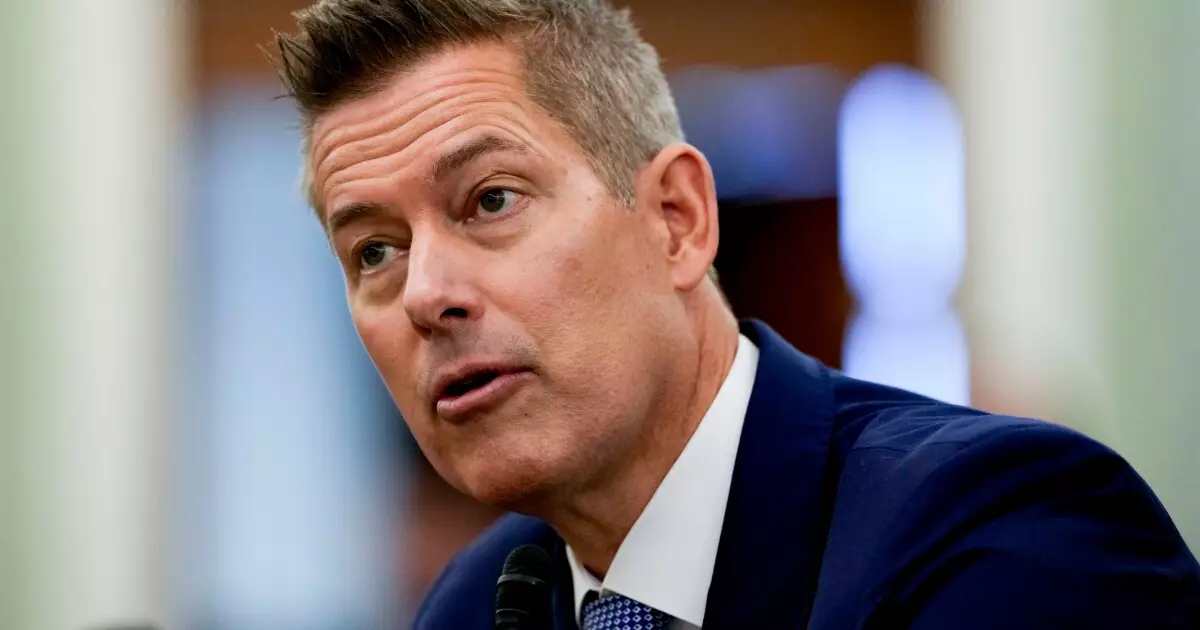As the initial excitement from the Biden administration’s infrastructure funding begins to dissipate, transit authorities are facing alarming bureaucratic realities that are not only complicating operations but also threatening essential services. The letters from U.S. Department of Transportation Secretary Sean Duffy signify the start of an unsettling era where public safety and fiscal responsibility are becoming intertwined in a way that could hamper the very transit services utilized by thousands every day. It’s a grim reminder that government support often comes with strings attached, and for transit systems across the country, navigating these new mandates is proving to be quite a challenge.
This shift in focus is particularly disconcerting for the New York Metropolitan Transportation Authority (NYMTA), which is now being asked not only to enhance safety standards but also to curb crime and fare evasion amid a climate of strained budgets. Coupled with federal scrutiny, this move could result in reduced funding—or worse, financial penalties for non-compliance. The fact that cities are measured against these standards raises critical questions about accountability and performance metrics that often do more harm than good.
Federally Mandated Safety vs. Local Realities
It is worth noting that while Secretary Duffy emphasizes the importance of a ‘safe and clean environment,’ the mechanics of implementing these measures may inadvertently lead to the prioritization of superficial fixes over substantive solutions. The demand for rapid remediation can create a one-size-fits-all atmosphere that ignores the unique challenges faced by individual cities. For example, cities like Chicago, which designated themselves as “sanctuary cities,” could easily find themselves at the mercy of federal funding dilemmas, restricting their ability to allocate resources where they are most needed.
Furthermore, the promise of nearly $21 billion for public transit in fiscal year 2025, as noted by the American Public Transit Association, could be misleading. Despite the slight increase over previous fiscal years, the reality is that this funding still constitutes a mere fraction of what is necessary to ensure robust transit systems. The pressure on municipalities to match these funds exacerbates the precarious situation, leaving many local governments struggling to keep their commitments amidst an ongoing budget squeeze.
The Pandemic’s Lingering Shadows
The pandemic has not only altered commuting patterns but also severely impacted farebox revenues. While some cities are beginning to see a recovery in ridership, many remain far from pre-pandemic levels. Leslie Richards, a former general manager for the Southeastern Pennsylvania Transportation Authority, noted a staggering budget shortfall exceeding $200 million. This metric alone encapsulates the fact that while operational hurdles are significant, they are juxtaposed against public expectations for service that often remain unchanged.
The challenge lies in aligning public needs with fiscal realities. When considering federal funding freezes and the additional constraints imposed by a new Republican-led oversight, it becomes clear that the public transit landscape is grappling with profound uncertainties. The ambitious infrastructure projects in cities like Chicago rest precariously on shifting federal priorities, often leaving public planning in a state of limbo.
The New Era of Federal Scrutiny
With new guidelines emerging from past administrations, including the mandates to potentially cancel or adjust specific projects, local systems are under unprecedented scrutiny. Polly Trottenberg’s insights about the current administration’s unprecedented attempt to reshape discretionary funding highlight an ongoing struggle that calls into question past decisions regarding federal infrastructure investment. Such capriciousness not only threatens the integrity of previously agreed-upon projects but also erodes trust in government promises.
This new reality necessitates a robust local response to federal mandates, where safety and effectiveness become driving forces behind public transit initiatives. However, it also invites inevitable bureaucratic delays and potential conflicts between local authorities and federal mandates, all while placing greater pressure on city budgets already stretched to the limits.
As transit systems grapple with shifting funding, enduring public scrutiny, and an evolving operational landscape, a strong cautionary note must be sounded: simply relying on federal funds without addressing the underlying local needs and systemic challenges may well lead to a downward spiral for public transportation in America. The time has come for cities to rethink their transit strategies, ensuring they are not just compliant but are instead innovative and resilient enough to withstand the winds of change.


Leave a Reply